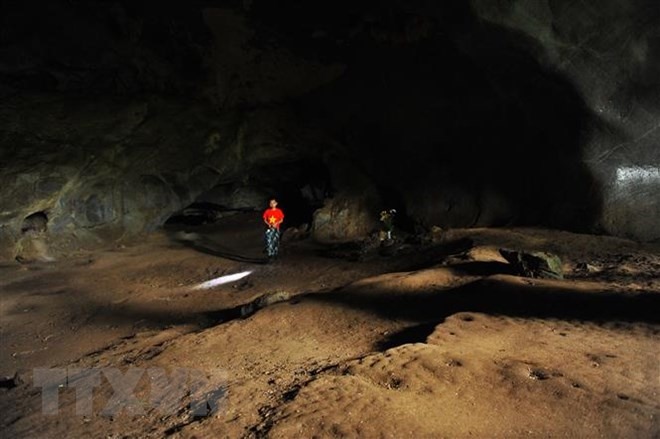 Life & Style
Life & Style

Scientists have found various traces of early people living 4,000 years ago in some caves in the
 |
| Scientists will further excavate Pù Chùa Cave and examine all the karst plateau mountains in the district in a few months’ time. — VNA/VNS Photo Minh Đức |
HÀ NỘI — Scientists have found various traces of early people living 4,000 years ago in some caves in the
Researcher Trình Năng Chung from the Việt Nam Archaeology Institute said most of the traces were found in Pù Chùa Cave,
“The cave is located at the height of 50m from the foot of a karst plateau mountain,” he said. “The floor of the cave is fairly smooth and measures 100sq.m. The cave is divided into many rooms separated by stalactites.
“Most of the cave receives natural light, which makes it suitable for humans to live in. Around 200m to the southeast of the cave is a big stream.
“Traces of early human were found mainly at the entrance of the gate,” he continued. “The layer of objects found is rather thin, of only 0.4m in thickness with stone and ceramic objects.”
Stone objects include dozens of well-polished axes. Scientists hold that most of ceramic wares here were made with potter’s wheels though some broken ceramic pieces show signs of having been made by hand. Ceramic wares were decorated with ancient patterns like twists and water waves.
Scientists came to the conclusion that Pù Chùa Cave was home to people of the Holocene period, around 4,000 years ago.
“This is the first time traces of residents of this era have been found in
Ngần and Khỉ caves in Phúc Sơn Commune have been quickly examined and will not be excavated yet. However, scientists found here dozens of stone working tools.
“In a corner of the cave, we found sediments of broken snail shells and teeth of animals,” he said. “The cave might have hosted people of the Stone Age, even earlier era than Pù Chùa cave.”
“From the results, we concluded that Chiêm Hóa District is a land with archaeology potential,” he said.
Concerned agencies are now planning to further excavate Pù Chùa Cave and examine all the karst plateau mountains in the district in a few months’ time. — VNS




